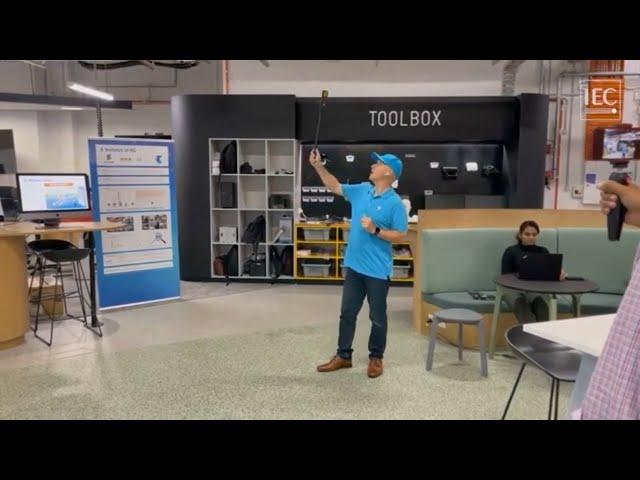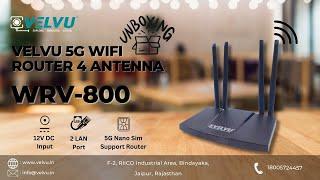
What Is 5G MIMO Beamforming And How Does It Work? | IEC - International Electrotechnical Commission
Scalable Cloud Hosting: https://www.siteground.com/go/qers8h00v2
-- Mike Wood, a leading authority on Electromagnetic Field (EMF) safety compliance and Chair of IEC Technical Committee 106, explains how 5G beamforming works.
Learn more about ICT here: https://hub.cnetworks.tech/
WHAT IS 5G BEAMFORMING?
In general, beamforming is a particular processing technique for signals that allow for directional transmission or reception. 5G beamforming allows Verizon to make 5G connections more focused toward a receiving device. For example, a typical 5G small cell that does not employ beamforming during its multiple-input multiple-output (MIMO) transmission will not be able to narrowly concentrate or focus its transmit beams to a particular area.
With beamforming, the small cell can focus the transmission in a particular direction towards a mobile device such as a cell phone, laptop, autonomous car or IoT node. This improves the efficiency overall of the network and saves energy.
5G BEAMFORMING AND MASSIVE MIMO
5G Ultra Wideband frequencies operate along the millimeter wavelength (mmWave) of the radio spectrum which is part of what allows 5G Ultra Wideband to carry so much data at groundbreaking speeds. Because millimeter waves can be more prone to disruption from interfering objects, and mmWave does not penetrate walls and other barriers as easily as low and mid band spectrum used for 4G and DSS applications, beamforming can help to create more reliable connectivity dynamics.
Another work-around for the propagation challenge with mmWave is our ability to leverage the diversity and multiplexing gains that accrue from MIMO-based transmission to provide for higher throughput and more robust signal reception at the receiver that result in a better overall user experience.
IEC - International Electrotechnical Commission. Published January 11, 2022. Understanding technology: 5G made simple. Retrieved from https://www.youtube.com/watch?v=HEk1bprich8&ab_channel=IEC-InternationalElectrotechnicalCommission
-- Mike Wood, a leading authority on Electromagnetic Field (EMF) safety compliance and Chair of IEC Technical Committee 106, explains how 5G beamforming works.
Learn more about ICT here: https://hub.cnetworks.tech/
WHAT IS 5G BEAMFORMING?
In general, beamforming is a particular processing technique for signals that allow for directional transmission or reception. 5G beamforming allows Verizon to make 5G connections more focused toward a receiving device. For example, a typical 5G small cell that does not employ beamforming during its multiple-input multiple-output (MIMO) transmission will not be able to narrowly concentrate or focus its transmit beams to a particular area.
With beamforming, the small cell can focus the transmission in a particular direction towards a mobile device such as a cell phone, laptop, autonomous car or IoT node. This improves the efficiency overall of the network and saves energy.
5G BEAMFORMING AND MASSIVE MIMO
5G Ultra Wideband frequencies operate along the millimeter wavelength (mmWave) of the radio spectrum which is part of what allows 5G Ultra Wideband to carry so much data at groundbreaking speeds. Because millimeter waves can be more prone to disruption from interfering objects, and mmWave does not penetrate walls and other barriers as easily as low and mid band spectrum used for 4G and DSS applications, beamforming can help to create more reliable connectivity dynamics.
Another work-around for the propagation challenge with mmWave is our ability to leverage the diversity and multiplexing gains that accrue from MIMO-based transmission to provide for higher throughput and more robust signal reception at the receiver that result in a better overall user experience.
IEC - International Electrotechnical Commission. Published January 11, 2022. Understanding technology: 5G made simple. Retrieved from https://www.youtube.com/watch?v=HEk1bprich8&ab_channel=IEC-InternationalElectrotechnicalCommission
Комментарии:
CAR RIDES with ETHNIC DADS - Sooshi Mango
Sooshi Mango
THE SECRET OF KARBALA | Shaykh Hammad Mustafa al-Madani l-Qadri
Shaykh Hammad Mustafa Al Madani Al Qadri
My Echeveria Collection // *Huge*
Succulents With Brock
Open The Eyes of My Heart x Jordan G. Welch
Jordan G. Welch
Treebeard's Song by Christopher Lee
altariel


























